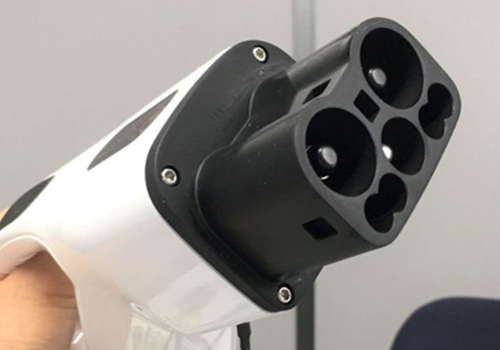fast charging
The term fast charging is usually used in the context of charging electric vehicle batteries. Fast charging is about shortening the charging time, which can be several hours during normal charging, thus limiting daily car use.
Rated capacity and charging time
To shorten the charging time, the car batteries are charged with a high charging current during fast charging. In this way, the charging time, which results from the battery's charging capacity and the charging current, can be reduced. For example, if a car battery has a nominal capacity of 50 kWh and it is charged at a power of 100 kW from 10% of the nominal capacity to 90%, then the charging time is 24 minutes (80% of 50 kWh). Doubling the charging power to 200 kW reduces the charging time to 12 minutes. In contrast, the charging time for a conventional charging station with an AC charging power of 20 kW would be two hours. So fast charging is about feeding as much energy as possible into the car battery in a short time.
Fast charging of batteries also brings with it certain problems, because regular fast charging reduces the service life of the batteries and the extremely high charging currents of a hundred or several hundred amperes could damage or even destroy the batteries and cannot be transferred via the existing charging cables and charging plugs.
To protect the batteries and to extend the battery life, it is recommended to charge the batteries to 80% of the maximum state of charge( SoC) during fast charging. The high charging currents cause the internal resistances of the battery cells to increase, which leads to higher heating. The higher the current, the higher the heating. Compensation can be achieved via current control according to specified characteristic curves
Fast charging systems and initiatives
The topic of fast charging and fast charging systems is addressed by the Charging Interface Initiative e.V.(CharIN), which is promoting the standardization of the European Combined Charging System( CCS), the charging cable and the charging plug - the combo plug. In addition to the 200 kW charging capacity, the development envisages a further increase to 350 kW. To prevent the charging cables from overheating due to the high currents, they require a larger conductor cross-section, which would, however, result in a stiffening of the charging cables.As for the charging plugs, the plug contacts could melt due to the high currents. In addition to the aforementioned CCS charging system, there is also the Japanese Charge de Move( CHAdeMO) and Supercharger from Tesla. For the CHAdeMO system, there is the newly developed ChaoJi system, which is expected to replace CHAdeMo in the medium term. ChaoJi impresses in the 2015 version 2 with a charging power of 237.5 kW (900 V, 250 A), and in the ChaoJi-1 version with a charging power of 900 kW, which results from 600 A charging current and 1,500 V charging voltage. This extremely high charging power is to be used for long-distance buses and trucks to charge their batteries in a short time.

